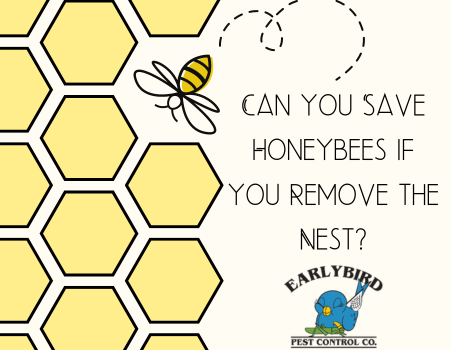The global decline of honeybees has raised concerns about the vital role these pollinators play in our ecosystems and food production. When a honeybee nest is discovered in a location deemed inconvenient or risky, the instinct may be to remove it. However, the question arises: can you truly save honeybees by removing their nest? This article explores the complexities of honeybee nest removal and its potential impact on bee populations.
Understanding the Importance of Honeybees:
Honeybees, specifically the Western honeybee (Apis mellifera), are indispensable pollinators crucial for the reproduction of many flowering plants, including numerous agricultural crops. Their role in pollination directly contributes to the biodiversity of ecosystems and ensures the production of fruits, vegetables, and nuts that make up a significant portion of the human diet. The decline in honeybee populations is often attributed to factors such as pesticides, habitat loss, diseases, and climate change.
To fully grasp the consequences of honeybee nest removal, it’s essential to delve into the intricate dynamics of a bee colony. A honeybee hive operates as a superorganism, where each individual has a specific role contributing to the overall health and functionality of the colony. Worker bees gather nectar and pollen, nurse bees care for the brood, and the queen is responsible for laying eggs. The collective effort ensures the survival of the colony and, by extension, the pollination of surrounding flora.
When a honeybee nest is removed, this delicate balance is disrupted. The loss of worker bees, brood, and resources can destabilize the colony, potentially leading to a decline in overall bee health and productivity. Furthermore, the environmental benefits of having a thriving honeybee population, such as increased biodiversity and ecosystem resilience, are compromised.
The Motivation to Remove Honeybee Nests:
Honeybee nests are sometimes perceived as a threat, especially when they are located in close proximity to human activities. Concerns about allergies, stinging incidents, or the structural damage caused by the nest might prompt individuals to consider removing it. However, it’s essential to weigh the potential benefits against the broader impact on honeybee populations.
The Challenges of Relocation and Ethical Considerations
While the idea of relocating a honeybee nest may seem like a compassionate alternative to removal, it comes with its own set of challenges. Professional beekeepers with expertise in hive relocation may be able to successfully transport a colony to a new location, but this process is not foolproof. Bees navigate using complex location-specific cues, and the relocation process can disorient and stress the colony, sometimes resulting in its failure to adapt to the new environment.
- Loss of Pollination Services:
– Removing a honeybee nest eliminates a local population of pollinators, which can negatively impact the pollination of nearby plants. This loss can have cascading effects on local ecosystems and agricultural productivity.
- Difficulty in Relocation:
– Translocating a honeybee nest is a challenging task that requires specialized knowledge and equipment. It is not always feasible or successful, and attempting relocation without proper expertise can harm the colony and the individuals involved.
- Disruption to Bee Dynamics:
– Honeybee colonies are intricate societies with specific roles for each member. Disrupting a colony can affect its stability and function, potentially leading to the abandonment of brood, food stores, and a decrease in overall bee health.
Additionally, ethical considerations must be taken into account when deciding to remove or relocate a honeybee nest. As essential contributors to our ecosystems, honeybees deserve our respect and protection. Efforts should be made to coexist with these vital pollinators, finding solutions that balance human concerns with the preservation of bee populations.
Alternative Approaches:
- Consultation with Beekeepers:
– When honeybee nests are discovered in inconvenient locations, consulting local beekeepers can be a constructive approach. Beekeepers may be willing to relocate the hive, preserving the bee population and contributing to local pollination efforts.
- Promotion of Bee-Friendly Environments:
– Instead of removing nests, efforts can be directed towards creating bee-friendly environments. Planting pollinator-friendly plants, avoiding pesticide use, and providing suitable habitats contribute to the well-being of honeybees without resorting to nest removal.
- Planting Pollinator-Friendly Gardens:
Encouraging the cultivation of gardens with a variety of pollinator-friendly plants provides honeybees with ample forage and supports their overall well-being.
- Reducing Pesticide Use:
Pesticides pose a significant threat to honeybee populations. By adopting alternative pest control methods and reducing pesticide use, communities contribute to a healthier environment for both humans and bees.
- Creating Bee-Friendly Habitats:
Establishing designated areas with suitable habitats for honeybees, such as wildflower meadows or pollinator-friendly green spaces, enhances the availability of resources for these crucial pollinators.
Educating Communities for Coexistence
An effective strategy for mitigating conflicts between humans and honeybees involves community education. Raising awareness about the importance of honeybees, their behavior, and the benefits they provide can foster a sense of appreciation and understanding. Communities can implement guidelines for managing honeybee colonies in urban areas, emphasizing the importance of seeking professional advice before resorting to removal.
In the delicate dance between humans and honeybees, fostering coexistence is paramount. Rather than immediately opting for the removal of honeybee nests, communities and individuals can explore alternatives that prioritize the preservation of these essential pollinators. Through education, collaboration with beekeepers, and the promotion of bee-friendly practices, we can create environments where both humans and honeybees thrive in harmony, ensuring the continuation of their crucial role in pollination and ecosystem health.


Recent Comments